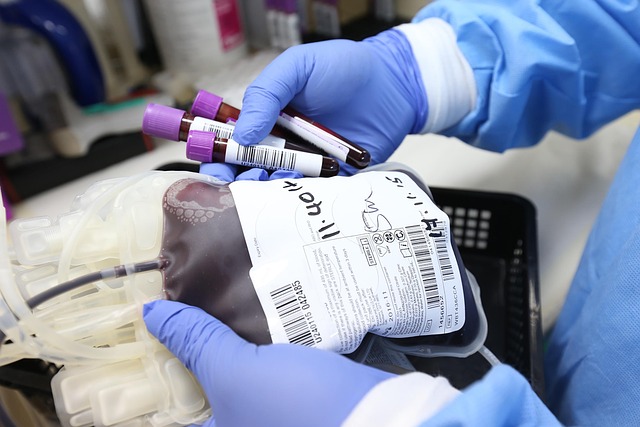The Latest Breakthroughs in Anemia Treatment You Should Know About
Anemia, a condition characterized by insufficient red blood cells or hemoglobin, affects millions worldwide. Recent medical advancements have revolutionized treatment approaches, offering new hope for patients. From novel medication formulations to cutting-edge therapies targeting specific types of anemia, these breakthroughs are changing the landscape of anemia management with improved efficacy and fewer side effects.

Anemia remains one of the most common blood disorders globally, affecting over 1.6 billion people. This condition, characterized by insufficient healthy red blood cells to carry adequate oxygen to tissues, manifests through symptoms like fatigue, weakness, dizziness, and shortness of breath. Recent years have witnessed remarkable progress in treating various forms of anemia, from iron deficiency to more complex hereditary conditions. These advancements aim to improve quality of life, reduce complications, and provide more personalized treatment options for patients.
Projected Anemia Treatment Developments for 2025
Medical research in anemia treatment continues to evolve rapidly, with several promising developments expected to reach clinical practice by 2025. Gene therapy approaches for conditions like sickle cell anemia and beta-thalassemia have shown unprecedented success in clinical trials, potentially offering long-term remission or even cures for previously difficult-to-treat hereditary anemias.
Additionally, novel erythropoiesis-stimulating agents (ESAs) with improved safety profiles are in late-stage development. These next-generation ESAs aim to reduce cardiovascular risks associated with current formulations while maintaining efficacy in stimulating red blood cell production. Researchers are also exploring targeted therapies that address specific molecular pathways involved in rare anemias, potentially offering more precise treatment with fewer systemic side effects.
Understanding Anemia Treatment Costs in Today’s Healthcare
The financial burden of anemia treatment varies significantly depending on the underlying cause, treatment approach, and healthcare system. For iron deficiency anemia, oral iron supplements remain relatively affordable, ranging from $5 to $25 per month. However, when oral supplements prove ineffective, intravenous iron infusions can cost between $400 and $4,000 per treatment, depending on the formulation and administration setting.
For more complex conditions like aplastic anemia or hemolytic anemias, costs escalate substantially. Immunosuppressive therapies may cost $10,000 to $30,000 annually, while bone marrow transplants—a potential curative option for certain types—can exceed $300,000 when accounting for procedure, hospitalization, and follow-up care. Newer biologic therapies targeting specific forms of anemia often carry premium pricing, with some treatments costing $50,000 to $100,000 per year.
Anemia Treatment Comparison: Traditional vs. Emerging Approaches
Traditional anemia treatments have centered around addressing underlying causes, supplementing deficient nutrients, and managing symptoms. However, emerging approaches are increasingly focusing on precision medicine—targeting specific molecular mechanisms unique to each anemia type.
Conventional iron supplementation remains effective for iron deficiency anemia, but newer formulations with improved absorption and reduced gastrointestinal side effects are gaining popularity. For anemias caused by chronic kidney disease, traditional ESAs are being complemented or replaced by hypoxia-inducible factor (HIF) stabilizers, which stimulate natural erythropoietin production rather than introducing synthetic versions.
Perhaps most revolutionary is the advancement in gene therapy for hereditary anemias. Unlike traditional management strategies that require lifelong medication or regular transfusions, these one-time treatments aim to correct the underlying genetic defect permanently. While still in various stages of clinical development, early results suggest transformative potential for conditions previously managed only symptomatically.
Analyzing Anemia Treatment Prices Across Different Options
The price landscape for anemia treatments varies dramatically based on treatment modality, geographic location, and insurance coverage. Understanding these variations can help patients and healthcare providers make informed decisions about treatment approaches.
| Treatment Option | Provider/Manufacturer | Estimated Cost Range |
|---|---|---|
| Oral Iron Supplements | Various OTC brands | $5-$25 monthly |
| Prescription Iron Supplements | Various pharmaceutical companies | $30-$150 monthly |
| Intravenous Iron (Feraheme) | AMAG Pharmaceuticals | $800-$1,200 per infusion |
| Intravenous Iron (Injectafer) | American Regent | $1,500-$2,500 per treatment course |
| Erythropoiesis-Stimulating Agents | Amgen, Johnson & Johnson | $1,000-$5,000 monthly |
| HIF Stabilizers (Roxadustat) | FibroGen/AstraZeneca | $1,200-$3,000 monthly |
| Blood Transfusion | Hospital-based | $1,000-$3,500 per unit |
| Immunosuppressive Therapy | Various pharmaceutical companies | $2,000-$5,000 monthly |
| Gene Therapy (emerging) | Bluebird Bio, CRISPR Therapeutics | $1-2 million (one-time treatment) |
Prices, rates, or cost estimates mentioned in this article are based on the latest available information but may change over time. Independent research is advised before making financial decisions.
Breakthrough Treatments for Specific Anemia Types
Recent years have seen remarkable progress in treating specific anemia subtypes with targeted approaches. For sickle cell disease, the FDA approval of Oxbryta (voxelotor) marked a significant milestone as the first treatment targeting hemoglobin polymerization—the root cause of red blood cell sickling. Similarly, Reblozyl (luspatercept-aamt) has revolutionized treatment for anemia associated with beta-thalassemia and myelodysplastic syndromes by regulating late-stage red blood cell maturation.
For patients with paroxysmal nocturnal hemoglobinuria (PNH), complement inhibitors like Soliris (eculizumab) and the newer Ultomiris (ravulizumab) have transformed management by preventing the destruction of red blood cells. Meanwhile, patients with anemia due to chronic kidney disease benefit from new oral HIF stabilizers like Roxadustat, which stimulate erythropoietin production more physiologically than traditional injectable ESAs.
These condition-specific breakthroughs represent a paradigm shift from managing symptoms to addressing underlying disease mechanisms, offering improved outcomes and quality of life for patients with previously difficult-to-treat anemias.
Future Directions in Anemia Treatment Research
The future of anemia treatment appears increasingly personalized and potentially curative. Research is accelerating in several promising directions, including expanded applications of gene editing technologies like CRISPR-Cas9 for hereditary anemias. Initial trials have shown remarkable success, with some sickle cell patients achieving functional cures after receiving genetically modified stem cells.
Artificial intelligence is also transforming anemia management by predicting treatment responses and optimizing dosing regimens. Machine learning algorithms can analyze complex patient data to identify which individuals might benefit from specific treatment approaches, potentially reducing trial-and-error in therapy selection.
Additionally, researchers are exploring novel delivery systems for iron and other treatments to improve efficacy while minimizing side effects. Nanoparticle formulations and extended-release technologies may allow for less frequent dosing and better tolerability, addressing key challenges in current anemia management strategies.
This article is for informational purposes only and should not be considered medical advice. Please consult a qualified healthcare professional for personalized guidance and treatment.




